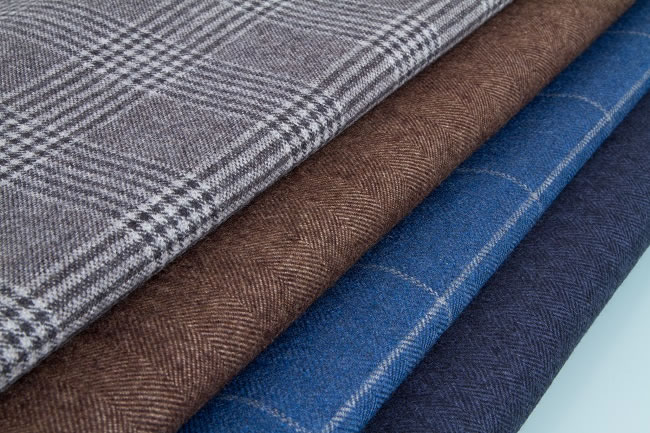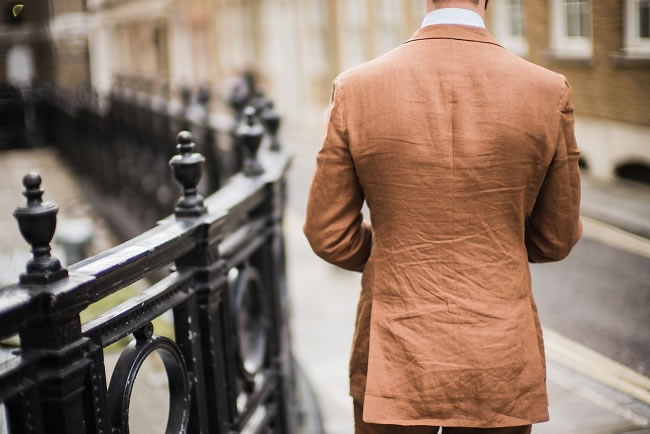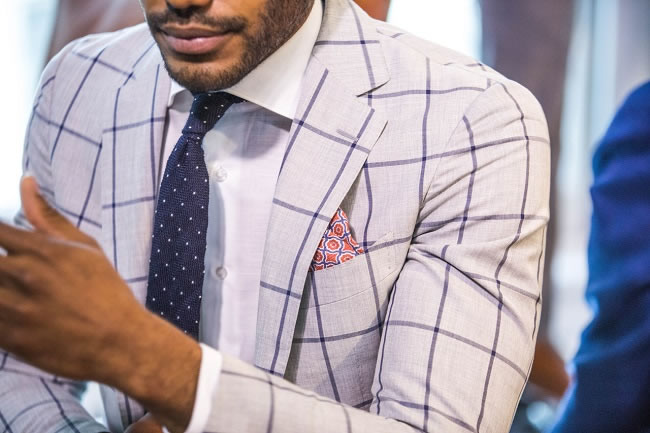1
HOME > Tips & Advice >
THE ULTIMATE GUIDE TO SUIT FABRICS
THE DIFFERENCES BETWEEN WOOL, COTTON, SILK AND LINEN SUITS
Written by Rakelle Maurici in Tips & Advice on the 26th February 2016

When it comes to spotting someone on the street in a particular kind of suit it can be hard to distinguish the exact material without examining it or touching the fabric, unless in fact you are a suit connoisseur. There are some pointers to note when it comes to choosing which suit is right for you or a particular occasion.
Wool is a sleeker fabric that is commonly preferred by brands as it is the most formal and mainstream of fabrics to choose from. Whereas a material like linen is a little less structured, creases easily and can have imperfections running through it, which can make it look quite natural. Then there is cotton which is the most rigid of suit materials - it’s heavier since it is woven tightly. Lastly, there is silk, the luxury suit material which tends to be used in bespoke suits because it can be difficult to work with. Italian silk, Dupioni being the most popular kind of silk will give you the perfect fit and drape.
When evaluating which fabric to choose - whether this is an off-the-peg suit, made-to-measure or bespoke, there are some things to remember. In some cases fabrics will consist of a blend of two materials which can be silk-wool or cotton-linen for example.

Knowing the basics of these four materials will determine the kind of drape. Since wool and silk are the sleekest of fabrics they add sharpness to your suit because it shapes to the body better and drapes in a natural form. This is also a great factor to remember if you are travelling overseas on business - they also crease much less than other materials. As previously mentioned it is hard to find a pure silk suit off the peg - for business and formal attire you are more likely to come across a silk-wool blend. The wool gives the suit some stiffness and both materials carry colour very well. Generally speaking a wool/silk suit is to be worn on duty so this limits the options slightly and dependant on colour or pattern they can’t be interchanged between seasons as frequently as other suits fabrics can.

Moving onto the second most popular material after wool, cotton -this can be easy to find off-the-peg and in every tailoring house. For most men this is a good choice as there are many kinds of cottons e.g. seersucker, denim, chino, fleece or corduroy. Since it is a stiffer material, the drape on a cotton suit is probably the poorest - it doesn’t give you much room to move in and tailors will recommend making the suit slightly bigger to give you breathing space. It’s also worth noting a cotton suit can be limited on how well it ages, it can begin to look a little rough around the edges if worn regularly. Although a lot of workwear suits are made from cotton for expense reasons they are considered less formal. However, they're much more versatile and can be dressed down as well as worn all year round.

Lastly, there’s linen which is certainly a summer material. It’s woven loosely so is rather light and best suited for the warmer climates. It’s also a fairly durable material but creases easily and is often considered too casual for formal occasions. Alternatively, you can opt for a linen-cotton blend which will give the outfit a little more stiffness and will crease slightly less. If you’re in need for some tailoring inspiration for a summer wedding this material is a well-suited light and comfortable option that we recommend.
When considering what fabric to choose it’s worth noting that the less structured the material is the less formal the suit will look. For example, unstructured blazers have draped shoulders or none at all for a real relaxed flair. Colour is also important; the brighter and bolder will give a much less business-formal aesthetic compared to the classic navy and charcoal colour options.

Trending
2
3
4
5
6
7
8
9
10











